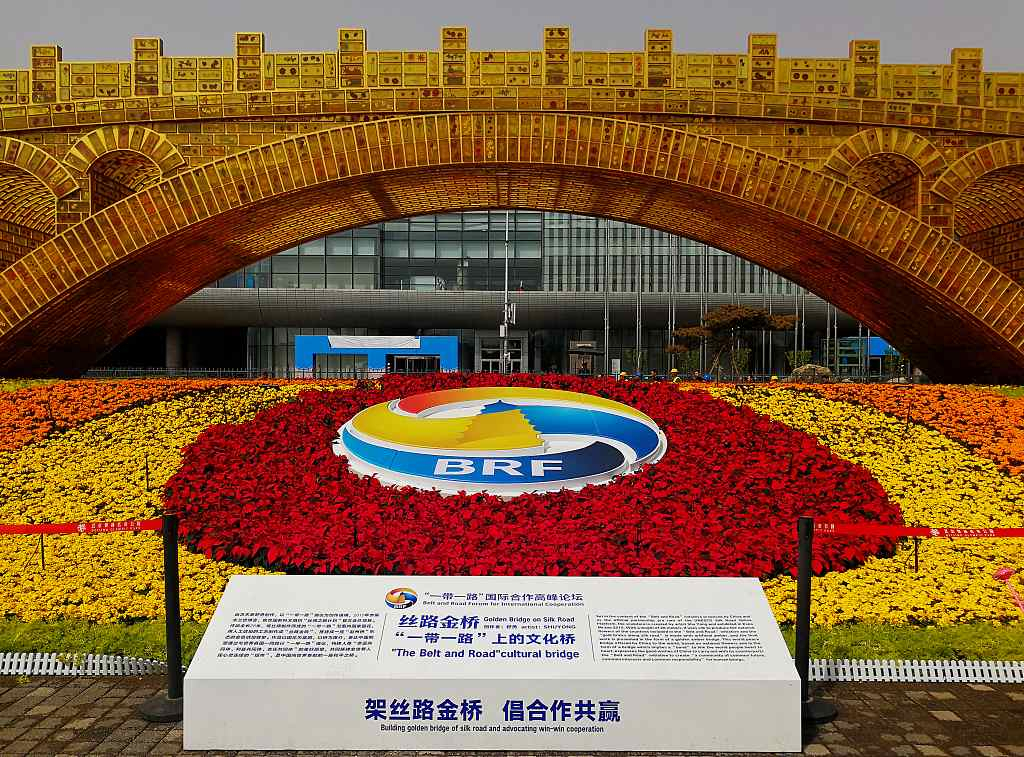
Editor's note: Ehizuelen Michael M. O. is Executive Director of Center for Nigerian Studies at the Institute of African Studies, Zhejiang Normal University. The article reflects the author's opinion and not necessarily the views of CGTN.
China's Belt and Road Initiative (BRI), an inclusive alternative cooperation model of shared development, hopes to redefine, reorient and deliver trillions of dollars in infrastructure financing to Asia, Europe, Latin America, the South Pacific and Africa. The BRI is not only about economy, infrastructure, and development; it is also about culture, health, knowledge transfers and the well-being of people. It aims to link individuals from diverse races, philosophies, and beliefs, probably making it the grandest investment drive put forward by a single nation.
Since its inception six years ago, the BRI has grown from a concept to a key platform that has proven to be politically and economically effective. Politically, China has signed 50 diplomatic cooperation agreements via BRI in 2017 alone. the Belt and Road Portal also lists over 130 nations affiliated with BRI; on top of the 29 international organizations that have signed cooperation documents to jointly develop the BRI.
Economically, from 2013 to 2018, the trade volume between China and the BRI economies exceeded 6 trillion U.S. dollars, increasing at 4 percent yearly. Additionally, this unprecedented grandiose initiative has become the most significant, far-reaching projects China has ever embarked on, making it one of the most discussed topics among the "Sino-optimism," "Sino-pragmatism," and "Sino-pessimism" about China's evolving role in the global economy.
The BRI is applicable as a strong driver of economic growth. It reflects a long-term vision of China for a global economy, and displays China's robust sense of responsibility and accountability as a major nation in the world.

The Second Belt and Road Forum for International Cooperation opens in Beijing, April 25, 2019. /VCG Photo
The Second Belt and Road Forum for International Cooperation opens in Beijing, April 25, 2019. /VCG Photo
What's more, the BRI is a huge effort to offer an alternative pathway for growth in developing nations, especially African nations. These nations aspire to improve its dilapidated infrastructure. Africa is searching assiduously for strategies and models to reverse the continent's anti-industrialization process that was guided by the Western "structural reforms" in the 1980s, and to develop their economies while securing and protecting their sovereignty, their political choice and their way of life in a widely hegemonic, Western-centric world.
While Africa aspires for all that, the U.S. views the BRI as an unsettling extension of China's escalating power for China-led regional development and military expansion. Distracted by the worst-case scenario, Washington is missing the chance to give backing to the advancement of African nations via the BRI, as well as to find common ground with Beijing.
This is because nothing worries the U.S. more than the prospect of losing absolute control over the globe. For that reason, Washington saw an urgent need to counter China's projection of influence by establishing the Better Utilization of Investments Leading to Development Act.
However, even with an augmented investment spending cap of 60 billion U.S. dollars, the U.S. International Development Finance Corporation funding seems minuscule in comparison with the BRI — the trillion-dollar project of the century. By countering the BRI, it is obvious that for Washington, it is not about improving the well-being of hundreds of millions of poor people globally.
China's BRI has positive economic implications for both African nations and the U.S., but the positive gain has been consistently overshadowed by the debt trap concern. This has hindered any opportunity Washington may have to work in collaboration with China to improve African nations' economic situation.

The Emali station on Kenya's Mombasa-Nairobi Standard Gauge Railway. /Xinhua Photo
The Emali station on Kenya's Mombasa-Nairobi Standard Gauge Railway. /Xinhua Photo
Notably, the case of Chinese influence in Africa along the BRI goes deeper than the so-called debt trap concern. It is all about geopolitical concerns that significantly frame Washington view concerning the BRI. Since the BRI primary drivers are economic; Washington viewed BRI as a deliberate attempt to economically marginalize Washington, to create a Eurasian sphere of influence because Washington believes that the consequential geo-strategic impact favors China; this invariably invites uneasiness from Washington.
However, the BRI is not necessarily a threat to Washington prosperity, nor to worldwide development. It is an initiative that provides infrastructure financing to nations who are desperately in need, and political externalities are secondary concerns.
Therefore, it is vital to distinguish between Chinese activities that threaten Washington interests and those that are neutral and complimentary. As such, there is a need for synergy between Washington and Beijing to envision the BRI as an essential instrument for strengthening partnership. The BRI must be shaped in a fashion that places the initiative on the cooperative rather than the competitive side of China-U.S. ties. Multilateral organizations, China and the U.S. can collectively build capacity to shape the BRI by being more closely and actively involved.
After all, the Chinese impact in Africa is overall positive. This is notable considering that over 1 trillion U.S. dollars has been sent to Africa over the last fifty years by the West with uncertain impacts on per capita income. On this ground, the BRI should not be depicted as a "debt trap" initiative that nations may fall into. As a matter of fact, it is through participating in the BRI cooperation that BRI nations are getting out of the trap of "no development" and actualizing their development agendas.
(If you want to contribute and have specific expertise, please contact us at opinions@cgtn.com.)